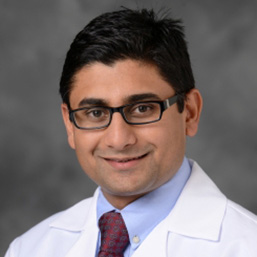
Dr. Gurjit Singh
Henry Ford Health System
With Stereotaxis technology, I’m able to move the catheter easily into every nook and corner of the heart, maintain catheter stability in highly mobile cardiac structures, reduce fluoroscopy time and fatigue, and achieve durable long-term results.
“Patients like to call me the electrician, and I guess that’s appropriate since I’ve always been ready to ‘fix’ things, especially electrical and electronic equipment,” says Dr. Gurjit Singh, cardiac EP at Henry Ford Health System in Detroit. “It’s part of what steered me toward this fascinating field, as was the immediate gratification during ablation of some of the deadliest arrhythmias.”
Dr. Singh found both short and long-term rewards when adopting robotic ablation over 5 years ago. “With Stereotaxis technology, I’m able to move the catheter easily into every nook and corner of the heart, maintain catheter stability in highly mobile cardiac structures, reduce time and fatigue, and achieve durable long-term results,” he says. He describes one particular case as a “humbling experience,” when ablation of a perimitral PVC with robotic navigation resulted in marked improvement of the patient’s left ventricular function.
“It’s about making a difference, one patient at a time,” says Dr. Singh.

